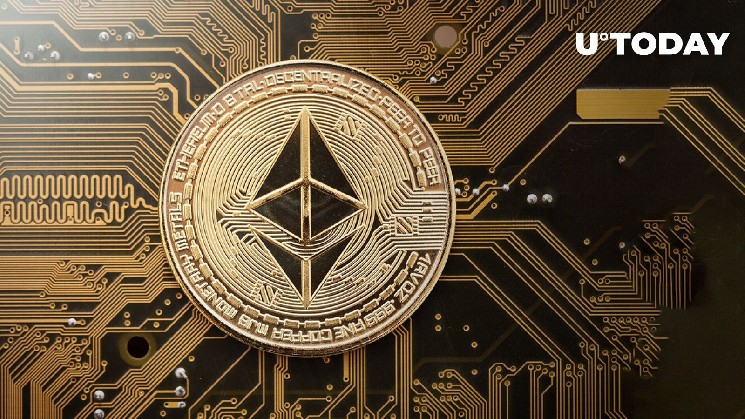Ethereum: Can Decline in Inflation Affect ETH in February?

During January, the cryptocurrency market witnessed a significant surge, and Ethereum (ETH) was among the beneficiaries. The leading altcoin in the blockchain arena recorded a 31% increase in market capitalization last month, driven by factors such as heightened anticipation among the ETH community.
It is important to note that the inflation rate plays a crucial role in maintaining the stability of a cryptocurrency’s value over time. A lower inflation rate signifies a scarcer supply of crypto, which results in increased demand and, in turn, increased value. Conversely, a high inflation rate may result in reduced demand, leading to a decrease in the asset’s value.
Additionally, certain cryptocurrencies, such as Bitcoin (BTC), have been engineered with a fixed maximum supply and a mining process that decreases the supply over time. This controlled inflation is a cornerstone of the flagship cryptocurrency. Although not initially designed as a deflationary coin, Ethereum is moving toward a state of scarcity.
Fall in Ethereum inflation
In June 2021, the Ethereum network took a step toward deflation with the EIP-1559 upgrade. This upgrade introduced a fee for each transaction on the ETH blockchain, effectively reducing the supply of the circulating cryptocurrency and addressing excessive transfer demand.
However, this was not sufficient to make Ethereum a deflationary asset as a greater amount of the cryptocurrency continued to enter circulation, even as some of it was being burned. The turning point came in September 2022 with the arrival of The Merge.
The most eagerly awaited update in the past year, The Merge, transformed Ethereum’s consensus model from proof of work (PoW) to proof of stake (PoS), resulting in improved efficiency and reduced block mining needs. This has caused the supply of ETH to grow at a slower pace, potentially leading to deflation in the long term.
There is good news for cryptocurrency holders, as data from Ultra Sound Money reveals that Ethereum has burned more tokens than it has issued since the start of the year. As of this writing, Ethereum’s annual inflation rate is -0.18%, compared to Bitcoin’s current inflation rate of 1.8%.
Could this be good for Ethereum in February?
A low inflation rate is generally seen as positive, but it can also have some drawbacks. One such drawback is the lack of incentive to spend the cryptocurrency, which can lead to a decline in innovation and even a potential deflation spiral.
Despite this potential issue, it is unlikely to affect Ethereum’s network, as it is the most widely used in key areas of the blockchain industry, such as stablecoins, decentralized finance (DeFi), non-fungible tokens (NFTs) and other smart contract-linked features.
It is unlikely that February will be the month that Ethereum experiences growth due to its deflation. The cryptocurrency needs to demonstrate its ability to overcome inflation over a longer period before any significant impact can be seen. Furthermore, preparations for the Shanghai event in March may divert attention away from Ethereum’s deflationary momentum.
However, in the long term, a successful deflationary trend could be great to attract more investors and strengthen ETH, just as Bitcoin’s trend has helped to bolster the cryptocurrency. It remains to be seen whether Ethereum can successfully maintain its deflationary trend in the coming months and years.






 Bitcoin
Bitcoin  Ethereum
Ethereum  Tether
Tether  USDC
USDC  TRON
TRON  Dogecoin
Dogecoin  Cardano
Cardano  Bitcoin Cash
Bitcoin Cash  Chainlink
Chainlink  LEO Token
LEO Token  Stellar
Stellar  Monero
Monero  Zcash
Zcash  Litecoin
Litecoin  Hedera
Hedera  Dai
Dai  Cronos
Cronos  OKB
OKB  Tether Gold
Tether Gold  Ethereum Classic
Ethereum Classic  KuCoin
KuCoin  Gate
Gate  Algorand
Algorand  Cosmos Hub
Cosmos Hub  VeChain
VeChain  Dash
Dash  Tezos
Tezos  Stacks
Stacks  TrueUSD
TrueUSD  IOTA
IOTA  Basic Attention
Basic Attention  Theta Network
Theta Network  Decred
Decred  NEO
NEO  Qtum
Qtum  Synthetix
Synthetix  Ravencoin
Ravencoin  0x Protocol
0x Protocol  DigiByte
DigiByte  Zilliqa
Zilliqa  Nano
Nano  Numeraire
Numeraire  Siacoin
Siacoin  Waves
Waves  Ontology
Ontology  Enjin Coin
Enjin Coin  Status
Status  BUSD
BUSD  Hive
Hive  Pax Dollar
Pax Dollar  Lisk
Lisk  Steem
Steem  Huobi
Huobi  NEM
NEM  OMG Network
OMG Network  Augur
Augur  Bitcoin Gold
Bitcoin Gold  Ren
Ren